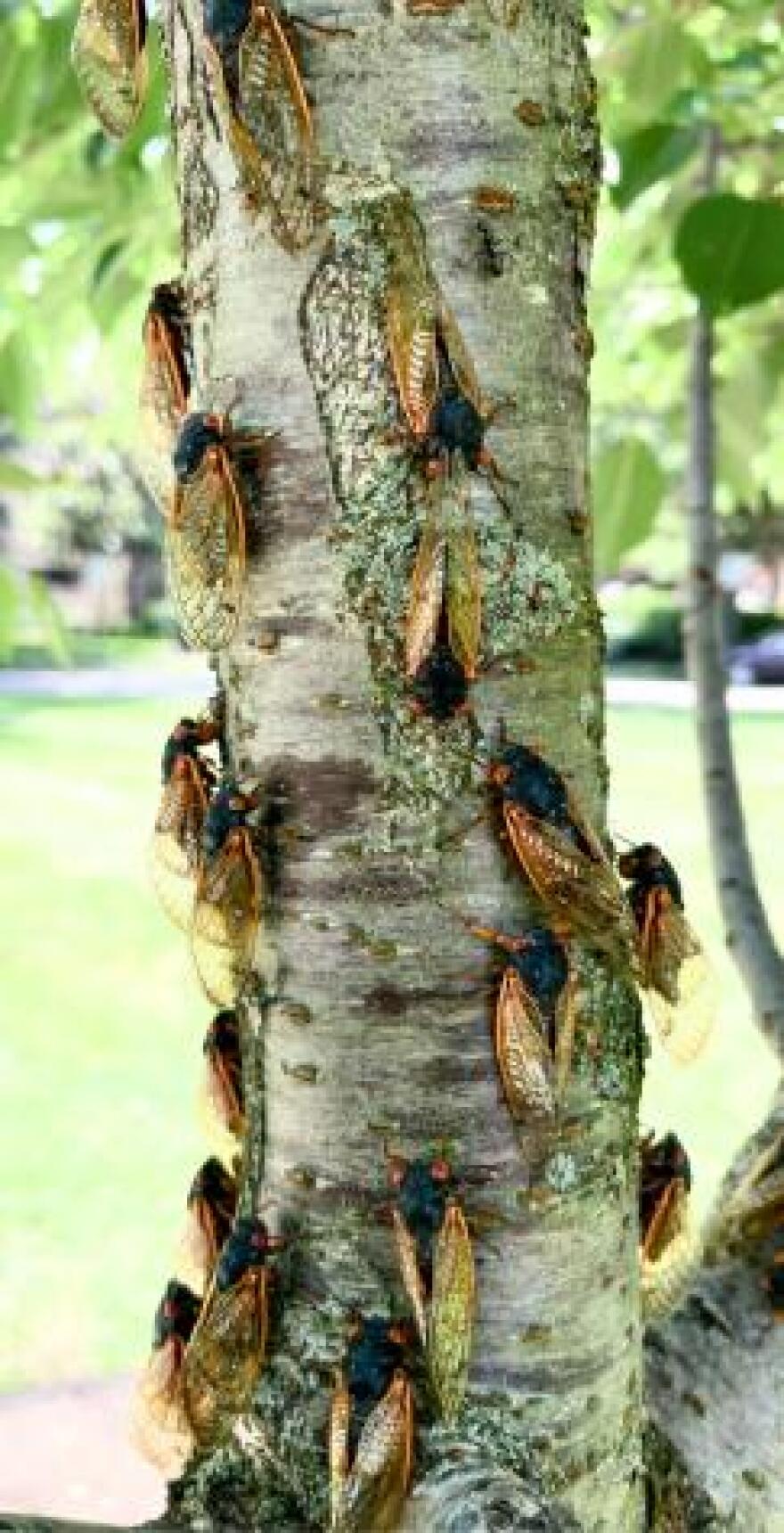This spring, billions of cicadas will dig their way out of the soil across most of the Midwest and Southeast, filling the air with their cacophonous soundtrack.
Starting in late April, two major broods of cicadas that show up on 13- and 17-year cycles will crawl out of the soil and head to treetops to sing and mate. It’s the first time these two broods have emerged at the same time in 221 years.
The males will die almost immediately after mating. The females will live just long enough to build nests in the trees and lay eggs. By the time those eggs hatch, the adults will have died, and the young “nymphs” will burrow back underground, starting the cycle again.
This many cicadas emerging at once is like spotting a rare comet, said Zach Schumm, an insect diagnostician at Iowa State University.
“This is a really weird phenomenon that we only get to see a few times in our lives,” Schumm said.
An unusual life cycle
There are many species of annual cicadas that are spotted every summer across much of the country.

Then, there are periodical cicadas that come in waves. The seven species of periodical cicadas show up on 13- or 17-year cycles, spending most of their lives underground, but their chorus could be louder this year when their life cycles sync up for the first time in centuries.
There are two broods emerging this spring, making it a rare event. Brood XIII emerges from the ground every 17 years, while Brood XIX makes an appearance every 13 years.
The last time these broods appeared at the same time, Thomas Jefferson was president, the Louisiana Purchase was completed and Ohio had just become the 17th state.
These two cicada broods won’t be seen at the same time for another eight generations.
In these particular broods, young cicadas, called nymphs, feed on sap from tree roots underground for 13 or 17 years, depending on the species’ life cycle. They spend their final weeks underground digging their way out.
Environmental cues such as soil temperatures alert them when it’s time to emerge, so they tend to appear sooner in places that warm up earlier.
Once they surface, they only live between four and six weeks – a race against time to ensure another generation of offspring.
They look for mates with their five eyes and rely on the synchronized mating calls of male cicadas, said Tamra Reall, a horticulturist at the University of Missouri Extension. It can be louder than a jet engine, helping explain why cicadas are drawn to the drone and vibrations of power tools and lawn mowers.
Safety in numbers

The 13-year brood, XIX, also known as the Great Southern Brood, includes four species that will be spotted from southeastern Iowa down into Louisiana and across the southeastern U.S.
The 17-year brood, XIII, or the Northern Illinois Brood, includes three species and will cover an area that stretches from eastern Iowa into southern Wisconsin and northern Illinois.
In some places, there could be as many as 1.5 million cicadas per acre.
“Certain areas are definitely going to be drowned out by the noise,” Schumm said. "Other areas — even within the range — you might not really find many at all. But odds are, you're probably going to see or notice some.”
These cicadas’ strategy is called predator satiation, basically meaning “safety in numbers,” experts said. Their predators — birds, spiders and snakes, to name a few — eat them, but when so many cicadas hatch at once, their predators can’t possibly eat them all. Since they only appear every 13 or 17 years, they’re not a reliable food source, which favors their survival.
Reall said it creates a feeding frenzy for predators, leaving a heavy layer of litter on sidewalks and highways that may even need shoveling.
Enjoy and observe
Researchers have pinpointed that soil temperatures dictate when cicadas emerge, but it’s still unclear why their life cycles are so long or why they appear in 13- and 17- year cycles.

Whatever the reason, some “stragglers” miss the memo and show up in off-years.
Climate change could also be disrupting them. The best available research suggests that if the cues cicadas rely on, like soil temperatures, are thrown off, so are their internal “counters.”
The best way to test this hypothesis is keeping careful records of when and where cicadas emerge off-cycle, but studying them is complicated by the long latent periods between cycles.
What scientists do know is that cicadas don't harm humans or agricultural crops.
They even have a few ecological benefits. Their exit tunnels aerate the soil; they’re a rare, but major, food source for their predators; and when they lay their eggs in trees, they naturally prune them, resulting in more flowers and fruits the following year.
The benefits continue after they die. As they decay, they contribute valuable nutrients to the soil.
“Those two broods aren’t going to align again for another couple hundred years,” Schumm said. “Because they're harmless and they're not really going to hurt anything, it's better to just enjoy it, observe it and be fascinated by it.”
This story is a product of the Mississippi River Basin Ag & Water Desk, an independent reporting network based at the University of Missouri in partnership with Report for America, with major funding from the Walton Family Foundation. Sign up to republish stories like this one for free.
Copyright 2024 St. Louis Public Radio. To see more, visit St. Louis Public Radio. 9(MDA3OTgyNDI4MDEzMTM0MjQzMTZlNDI0Mg004))




